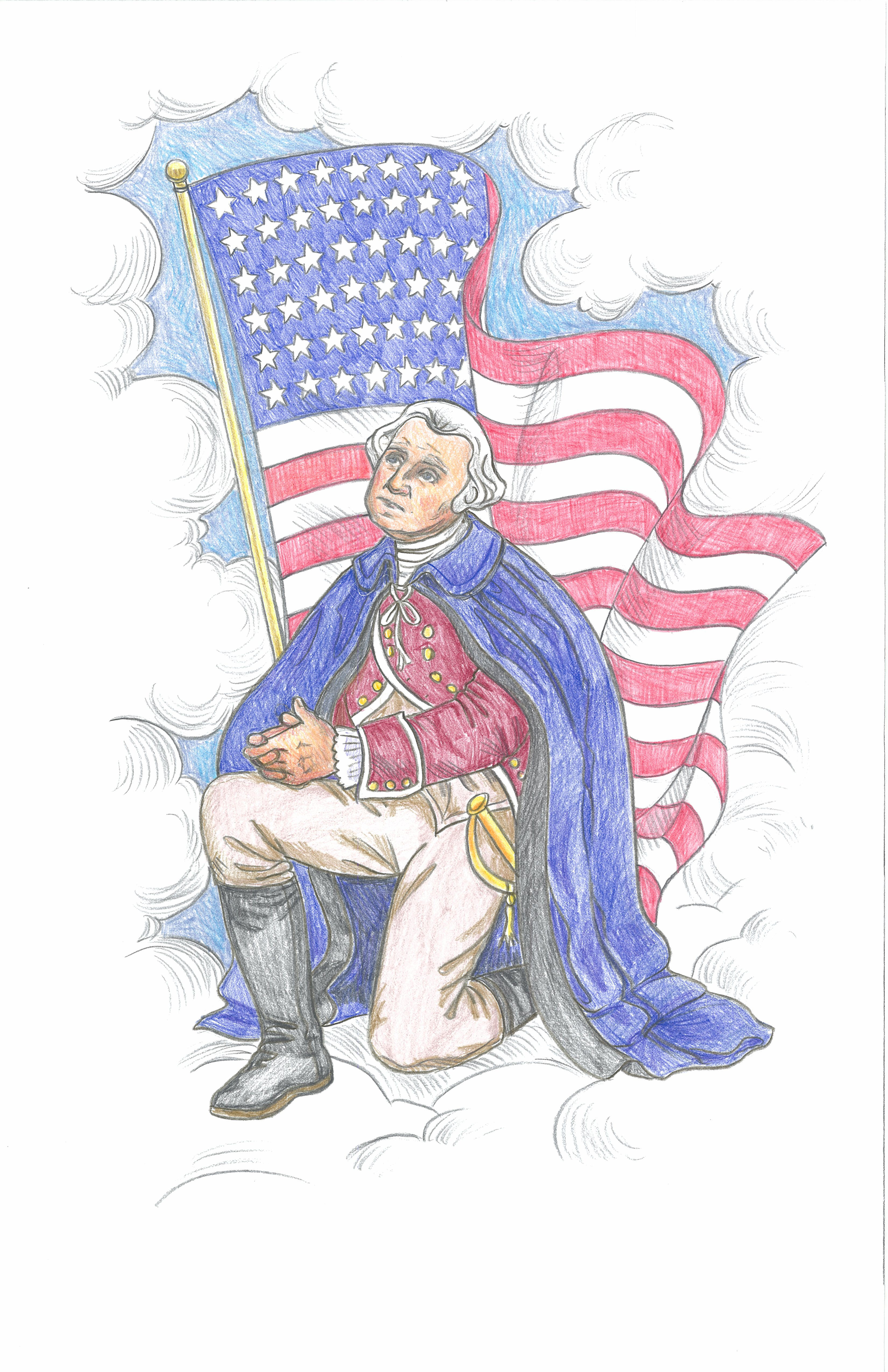SYMBOL of OUR LIBERTY
Story by Howard R. Driggs

Back of every great song lies a story. A soul stirring lyric, like a rose, blooms at the end of a thorny stem, with roots in a soil made rich by sacrifice. How true this is of our national anthem, The Star-Spangled Banner.
Here is a distinctive national anthem born in the midst of battle. It was during the War of 1812. America, its rights trampled on by old world powers, had sprung to the defense of hard-won liberties.
Victories for our forces had been won around the Great Lakes and on the high seas. For the moment, however, our National Capital was left virtually undefended. Seizing their opportunity, the British drove on to capture this vital city. President Madison and members of his cabinet watched with dismay the rout of our inadequate army.
At the White House the First Lady of the Land had a dinner in preparation for many guests. Suddenly, word came from the President for her to flee. One treasure, the Stuart portrait of General Washington, she could not leave behind. At risk of delay she hastily cut this from its frame, rolled it carefully and handed it to a trusted friend to save. Then she fled.
Officials of Washington were likewise in flight. An arrogant, reckless enemy swept into our Nation’s Capital intent on destruction. Government buildings and homes were set on fire. The White House was raided; food for Dolly Madison’s dinner was eaten by the hungry invaders, and the loved dwelling given to the flames. All the city might have been reduced to ashes, had not a timely, heavy rain checked the fires. It was a dark hour for youthful, high-spirited America.
Another severe test was not long coming. Up the Chesapeake Bay sailed the British fleet confident that Fort McHenry, main defense of Baltimore, would speedily fall before it. Major Armistead and his band of American fighters had determined otherwise.
Before the warships launched their attack, Francis Scott Key, a young lawyer of Maryland, visited the enemy to try to win release for a friend who had been taken prisoner. His mission was successful, but Key was not permitted to return at once to his friends ashore. Instead, he was held first on a frigate while preparations for the fight went on; then before the bombardment began, he was returned to the little boat that had carried him from Baltimore.
From its deck, through lengthened hours, he watched with anxious heart the efforts of the foe to silence the guns of the fort and bring down his country’s flag. At last for relief of his patriotic emotion, he drew from his pocket a letter, and on the back of it penned lines, which later rounded to completeness, gave us our Star-Spangled Banner.
LEARN MORE